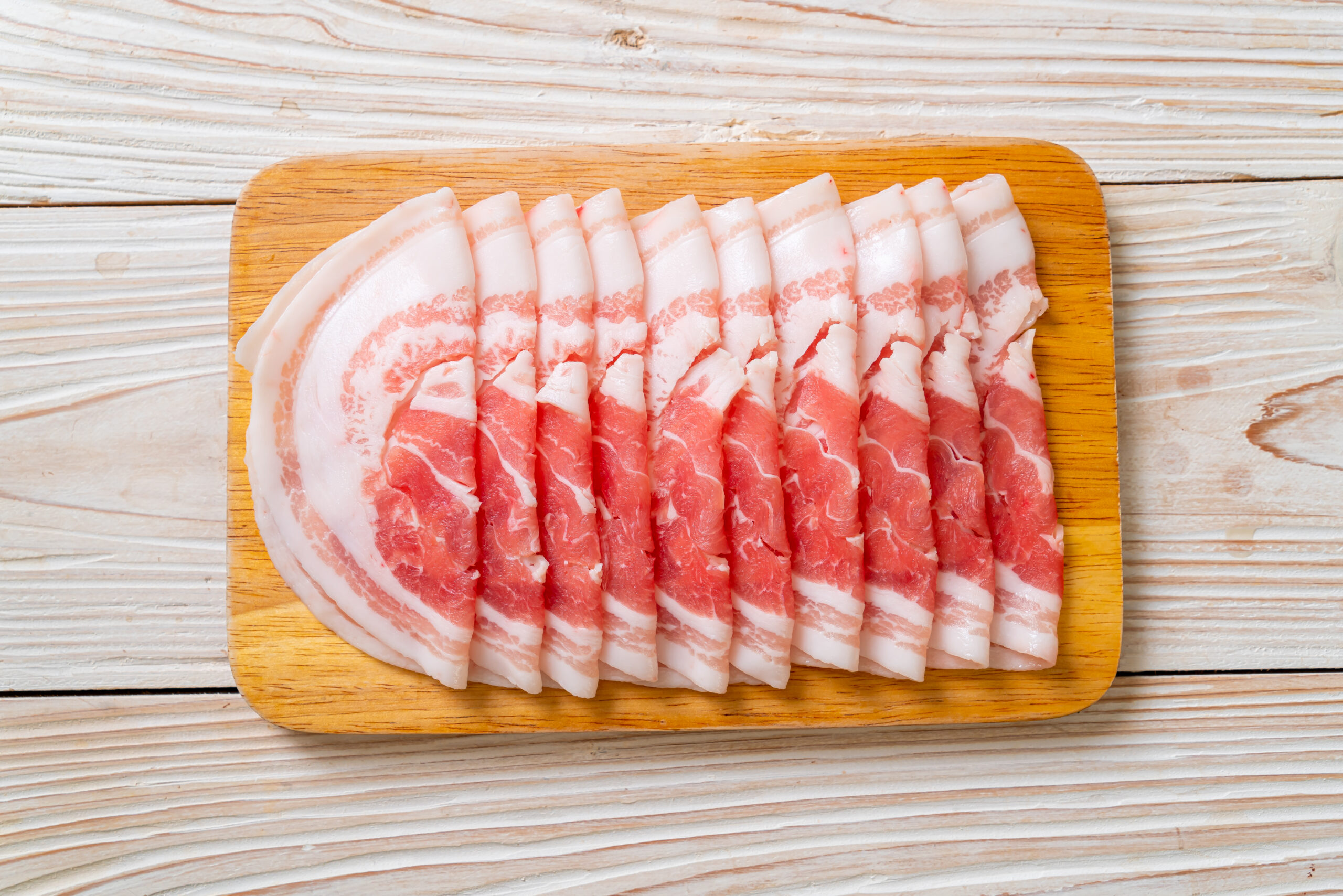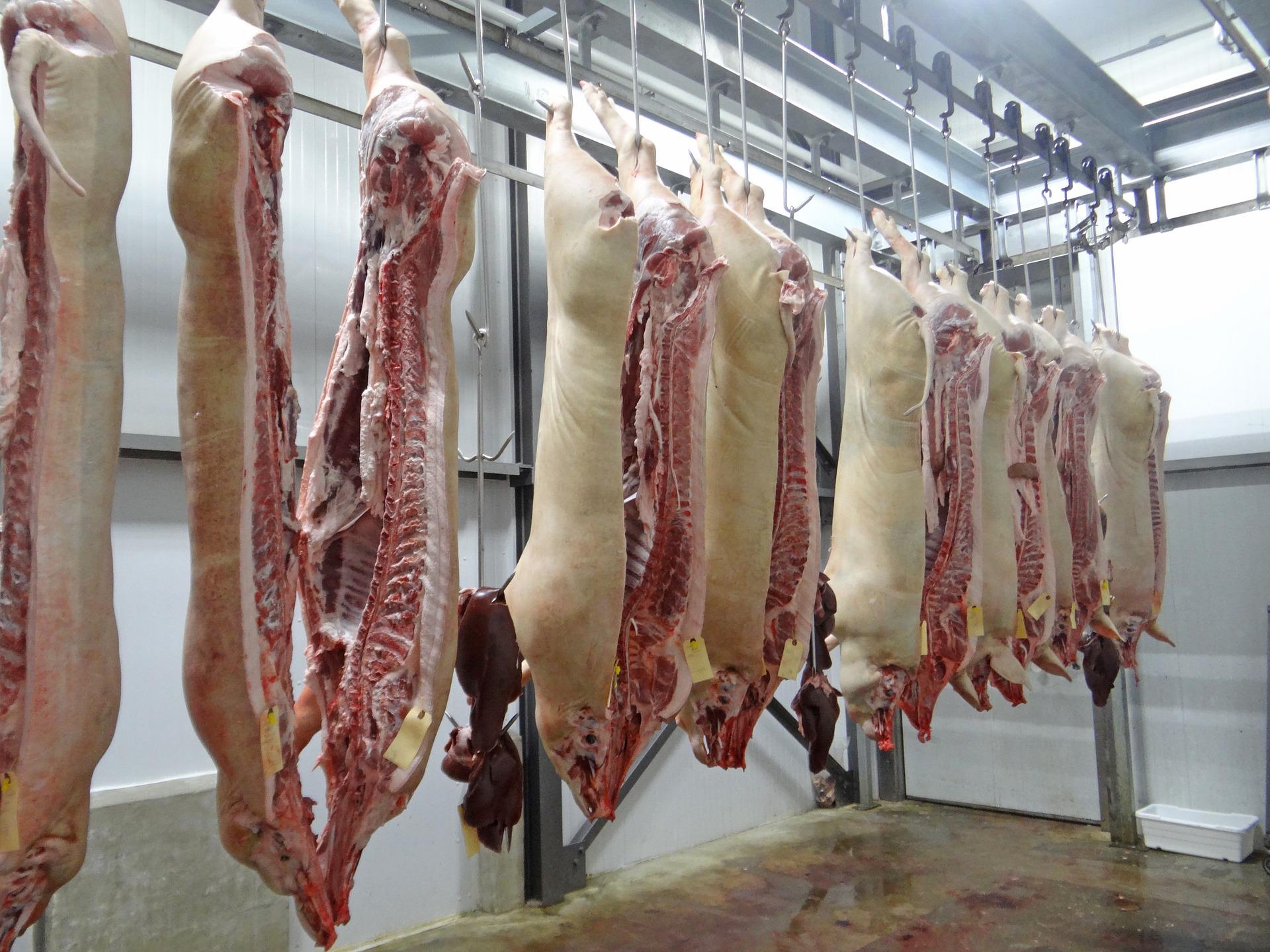There is nothing that excites pig farmers more than seeing their herd healthy and having attained the ideal slaughter weight they sought for. It means their arduous labour put into rearing the animals will have paid off and the investment made from project inception, feeding, health, and project management can be finally recouped through sales. However, if the slaughter process is not properly executed, losses can still be experienced.
The final product of the slaughtered pig depends on the market demands such as suckling, porker, baconer, grower or finisher. The general slaughter process starts with ante-mortem inspection, to stunning, dehairing, skinning, washing of the carcass, evisceration, post-mortem inspection, and then finally refrigeration, handling and transport of carcasses and meat to the desired market.
Prior to slaughtering, it is paramount that the pigs are not stressed in any manner as it affects the meat quality. Farmers should avoid deprivation of water or food, rough handling, and exhaustion of pigs due to transporting over long distances. Furthermore, mixing of animals reared separately can result in fighting.
The main purpose of inspection during the slaughter process is to assess the health of pigs before death (ante-mortem) and after death (post-mortem). This guarantees safety and quality of meat for the market. Observing the animals’ behaviour to check for signs and symptoms of disease, isolating animals that show signs of disease, illness, or injury and verifying identification records and tags are some of the methods employed during this process.
Ante-mortem inspection averts infection of premises, equipment, carcasses, and personnel, thus enabling the implementation of control, disinfection, and preventive methods to contain diseases.
Stunning is the most common method used during the slaughter of pigs for commercial production systems. For subsistence and smallholder systems throat slitting is usually employed. There are other methods for killing the animal such as the lethal injection and bullet-free firearms. Methods of stunning are captivebolt stunning followed by bleeding or pithing, percussion stunning, electrical stunning and carbon dioxide gas stunning.
The dehairing process is done by first scalding the pig in water at around 60 °C for about six minutes, which loosens the hair in the follicles. If the temperature is too low, the hair will not come loose properly, and if it is too high the skin will be cooked, and hair removal will be difficult. Dipping the pig into a water tank works better.
Dehairing can be done using a bell scraper or knife, or a mechanical dehairing machine. In cases where the skin is required for leather production, the pig is dipped in a bath containing a hot resin adhesive. After the adhesive has set, the resin adhesive is then peeled off pulling the hair with it from the roots.
Skinning, as the name implies, is the removal of the skin from the carcass. Usually, two operators work together on a pig to slit open the skin on the legs and opening the skin to the stage where it can be pulled off the back. Skinning is usually done with the carcass hanging.

Evisceration, also known as gutting, requires a longitudinal incision from the pubis to the neck to remove the offal. The rectum is loosened and tied off. The incision cuts through the pelvis, and the bladder and sexual organs are removed. The foreskin in male pigs must not be punctured as it is a source of infection. Depending on the market requirements, the pig can be split down the backbone.
The carcass is washed to remove visible soiling and blood stains to improve its appearance. It is imperative to ensure that stains of gut contents are cut off, and wiping cloths are not used.
According to the Techniques and Hygiene Practices in Slaughtering and Meat Handling guide produced by the Food and Agricultural organisation (FAO), a wet surface favours bacterial growth so only the minimum amount of water should be used, and chilling should start immediately.
A well-designed cooler will dry out the carcass quickly, inhibiting bacterial growth.
The post-mortem inspection is done on the organs, lymph nodes, and the entire carcass to investigate indications of unwholesome conditions. If the meat is approved for human consumption, an inspection stamp is put along the length of the carcass.
Refrigeration is done to delay bacterial growth and extend the shelf-life of the meat. A deep muscle temperature of 6 to 7 °C should be achieved in 12 to 16 hours for the carcass, and the chilled meat must be kept cold until it is sold or cooked. Pigs kept at -1 °C attain an expected storage life of 1 to 2 weeks.
The pig carcasses and offal are transported to retail outlets only by meat delivery vehicles that maintain the meat temperature at or near 0 °C. Meat inside the trucks should be suspended on rails and if stockinettes are used, the farmer or company should ensure their cleanliness.









